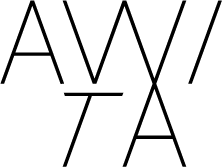Touring the Internet: the Potential of Digital Platforms to Support and Extend Artistic Practise with Vic Brooks and Ileana Ramírez
Victoria Brooks is Senior Curator Time Based Media at EMPAC and Ileana Ramírez is Director of Tráfico Visual.
Vic Brooks
‘The time based media centre at EMPAC is a very specific building with an infrastructure that’s built to take the limits of what it means to make visual art. Artists come to us to make new work with evolving tools, in moving image, performance, interactive image. EMPAC is where the physical meets the digital. It takes a lot of work to produce work for digital platforms, as they all have their own audience and cultures and specificities'.
Ileana
Based in Caracas, Venezuela, Ileana founded Tráfico Visual in 2009 as a virtual platform dedicated to the dissemination of content linked to contemporary art and the Venezuelan and Latin American cultural scene.
‘I started with a camera 10 years ago, videotaping everything that was going on in the art scene and posting recordings to the internet.'
Vic Brooks
'Artists can expose and use the productive frictions between why something was made versus how we want to use it. Many digital platforms amplify and reinforce the racial and gender bias which is in-built to different technologies, for example, the history of radio which is optimised for the male vocal range. A lot of work I do, as a curator involves commissioning and producing pretty complex art works.
Every day I am working with artists discussing these tools, trying to find gaps we can exploit, or expose or reveal how these things are working. A recent example of this is a Martine Sims VR project which we filmed on the eve of Trumps election - another crisis in a way. The VR work was filmed entirely in 360 degrees inside a purple space that only the actor was inside, which was an alienating process in many ways for the performer and the Director.
The key is that the outcome and success of the new and existing technological tools we use, and that are so crucially important for the dissemination of work, and for artists to communicate with each other, and for all of us, always come down to, come back to the point of contact with physical communities and networks. Both in and out and on and off the screen. Artists are always trying to break the technology which was designed for specific things for example gaming and architecture - which ironically are much more advanced than in the art-world. This is interesting considering how visually focused we are.'
Ileana
'The Tráfico Visual website has different sections. Over the years we’ve had collaborations from writers, curators and researchers that have built up the website, it's been very organic and is free to access for everyone. We also put out content on our youtube channel, which includes interviews from different events. Right now in Venezuela protests against the regime have been stopped due to the persecution of opposition leaders. However, the large Venezuelan community in Portugal have the spirit and opportunity to assert and ask for our rights, many artists go to these protests to recorded or create something else out of these situations. In Venezuela the government has eliminated the autonomy of the museums and centralised all the organisations administration into one office. The originality of different museums has been lost and museum directors have no opportunity to create exhibitions as they have to ask for permission.
Another type of action by artists has emerged in and from private spaces - in difficult times, artists won’t be stopped - these spaces have been made by creators to escape the government ideology. Digital tools have the potential to allow us to create an archive of all this material and activity. At one point we live streamed with the photographer Martin Parr and it was very powerful, to document information. The press at this time were shutting down because the government didn’t want journalists to inform the public about what was going on, so we’ve very much had to think of alternative ways to do this. In many ways it is an act of resistance, fighting against the erasing history. In Venezuela a goal of the regime is to create a new mindset, to delete the past and with it our identity. With our online work at Tráfico Visual, we try to keep our national identity alive in the memory of society. We are trying to remind the community of what liberty and freedom means, to do this we have to break down the walls of confined thinking. With contemporary art, Venezuelans identify historical symbols with the rich collective memories they are losing because of this governments oppression. Many artists from Venezuela are being forced to leave and moving to other parts of the world. Tráfico Visual allows us to connect with our diaspora.
I invite local artists to be a part of this project, to reflect on what they are going through, and to be part of freedom in art and in creation, not just in Venezuela, but globally. Our website serves as a holding ground for Venezuelan artists. We are adapting to the needs of Venezuelan artists - financial support and promotion. Tráfico Visual is evolving and we need to keep growing the network, not just as website but as a physical community. We want to evolve from the virtual to the physical, which is ironically the opposite of the Western art worlds experience, which as a result of Covid-19 has moved from physical to virtual. We were here first from necessity. ‘
Vic Brooks
'It's super important to safeguard and secure your archive Ileana, and to keep going and keep growing our international network. It’s very much not just a website but a physical community - at the end of the end of all this I hope we will be together again'.’


